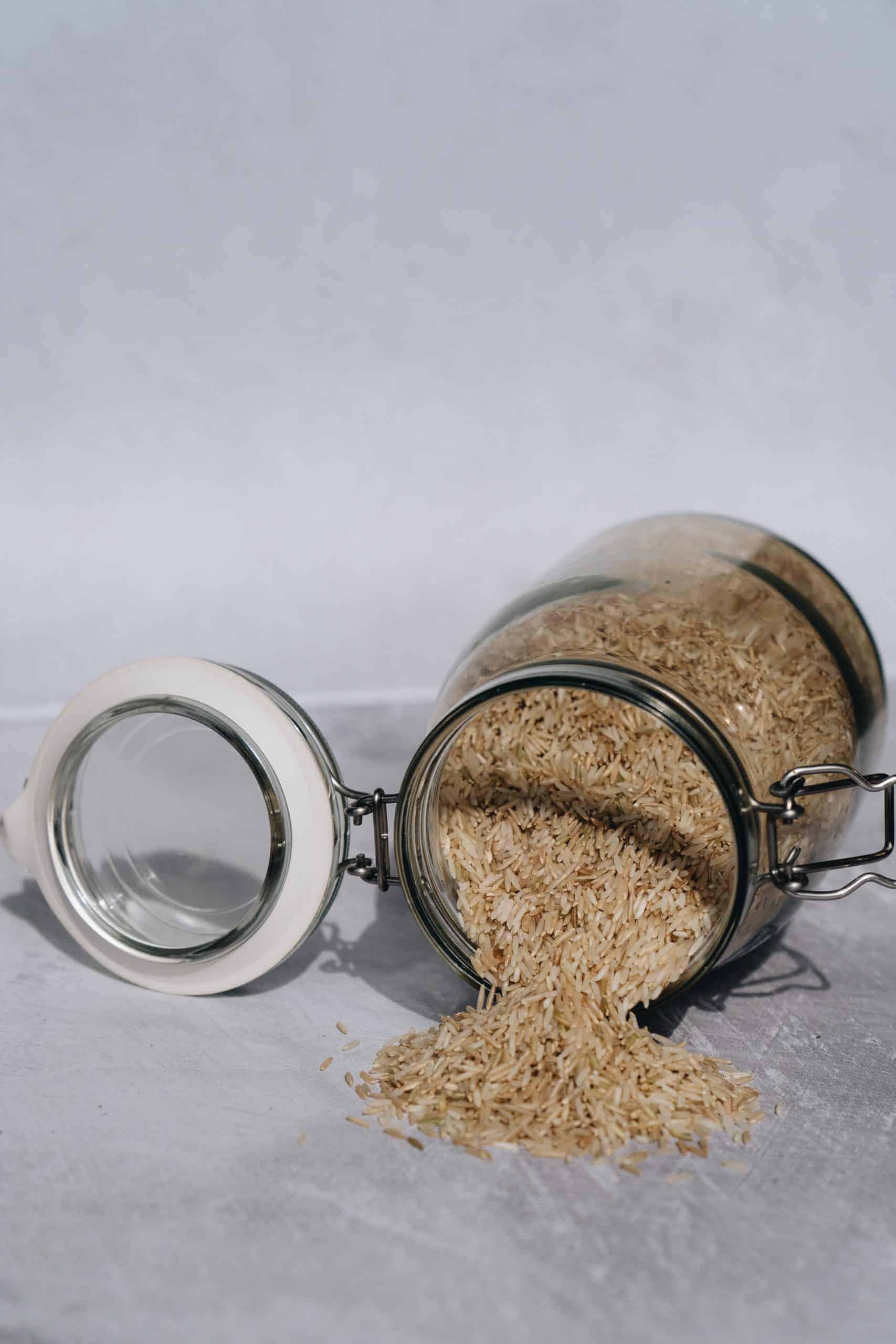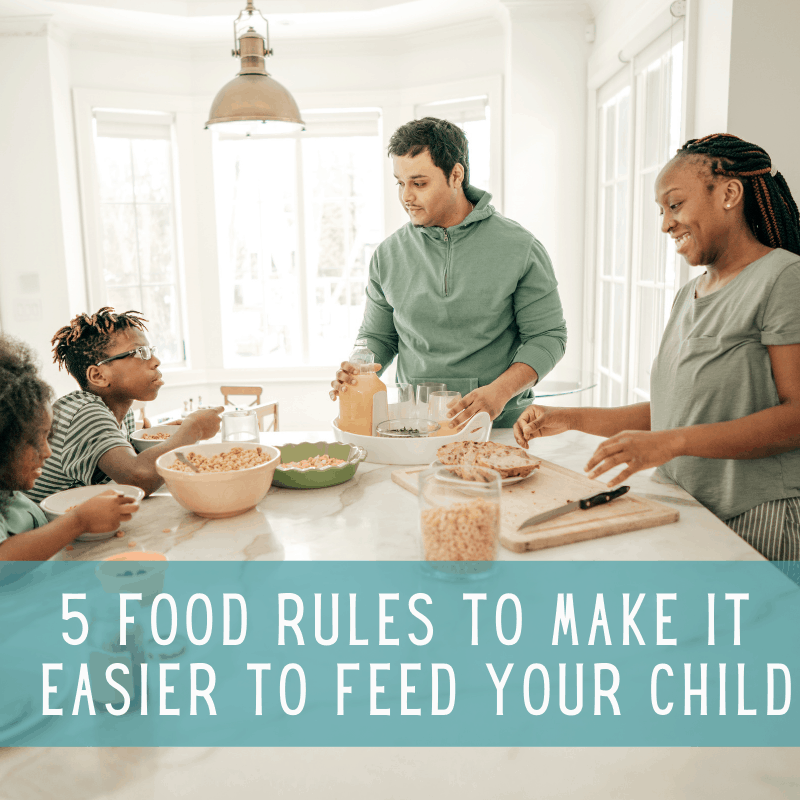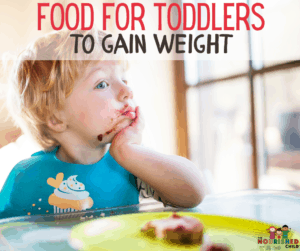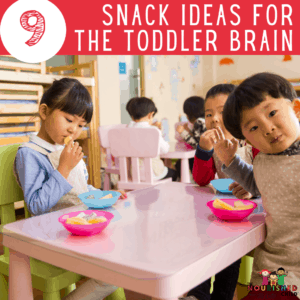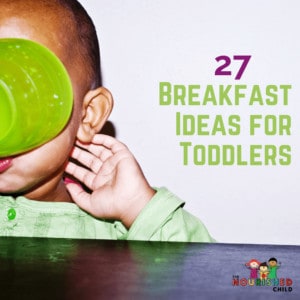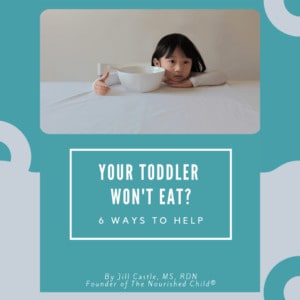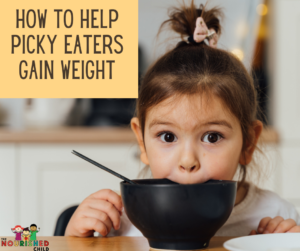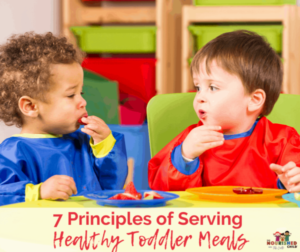Toddler Portion Sizes: How Much to Feed a Tot
February 12, 2021
How much food should I give my toddler? Learn how much to feed your toddler using these basic toddler portion sizes.
Good nutrition during the first few years of a young child’s life is important for growth and establishing healthy eating patterns. Toddlers are introduced to a variety of solids and they develop flavor preferences during this time.
Now’s the time to introduce healthy foods but how do you know what and how much to feed a toddler?
Toddler portion sizes are an easy tool to plan small nutrient-rich meals for your growing little one.
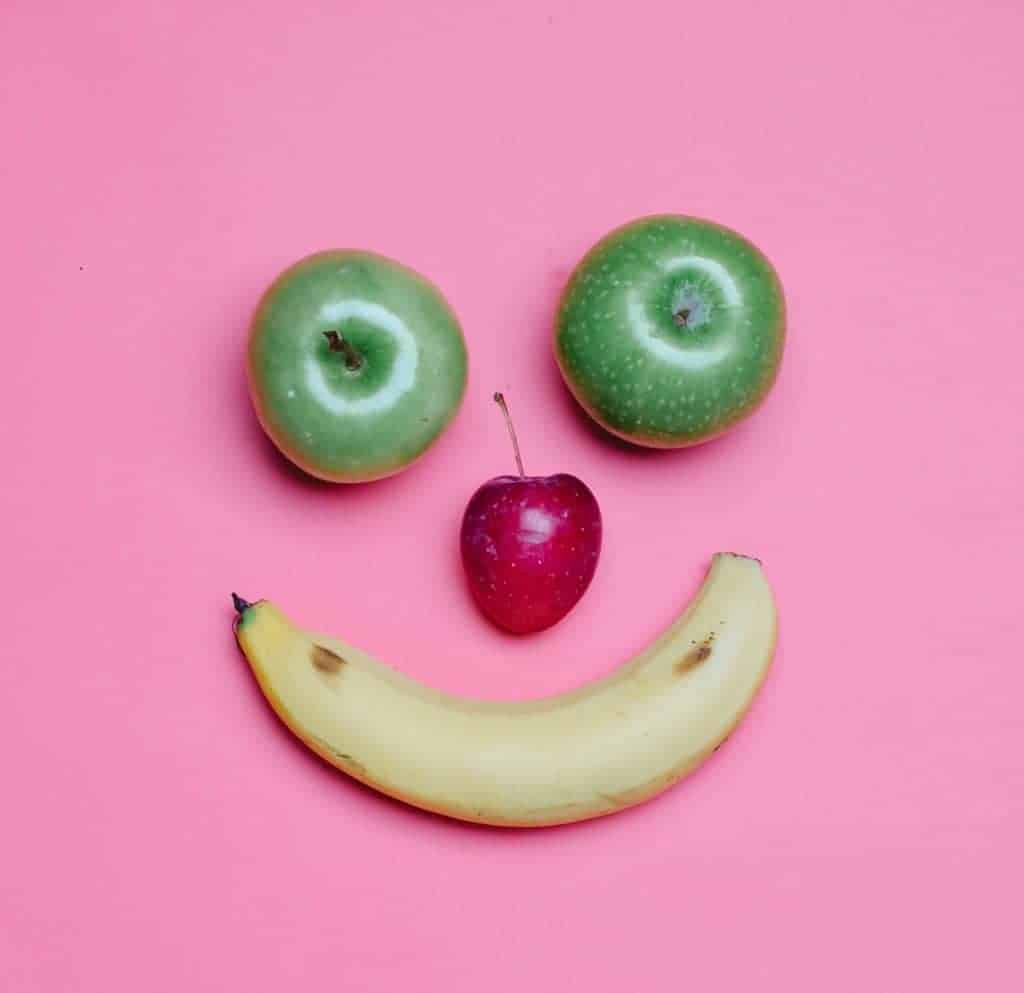
General Guidelines for Feeding Toddlers
According to the 2020 Dietary Guidelines for Americans, children ages 1 to 3 years old need about 700 – 1,400 calories a day depending on age, sex and weight.
Toddlers’ energy needs are high, especially when you consider their size!
But they have tiny stomachs and can only eat a small amount at a time. There’s a natural limit to how much a toddler can eat so it’s important they eat nutrient-rich foods.
Spread a variety of different foods over 3 meals and 2 to 3 snacks a day to make sure a young child gets the nutrients they need.
Portion Sizes for Toddlers 1-3 Years
So what makes a balanced meal?
The 5 food groups: Grains, fruits, vegetables, dairy, and protein.
That’s okay if every meal doesn’t contain every food group. That’s where nutritious snacks come in. Aim to get all of the recommended food portions throughout the day.
Grains
At least half of the grains should be whole grains such as brown rice, whole grain crackers, oatmeal, whole grain low-sugar cereals and whole grain pasta. They’re higher in fiber and potassium!
Limit refined grains (white bread, crackers, pretzels and cereals).
Toddler Daily Needs: 1 ¾ to 5 ounces/day
1 oz = 1 slice of bread, 1 cup of cereal (ready-to-eat),
or ½ cup of cooked rice, cooked pasta, or cooked cereal
Vegetables
Kids love starchy vegetables!. But don’t rely on potatoes and peas as their main source of vegetables.
Dark-green, red and orange vegetables, beans, peas and lentils should make up the majority of their vegetable intake.
Daily Needs: ⅔ to 1 ½ cup/day
1 cup = 1 cup cooked vegetables or 2 cups of raw leafy vegetables
Fruit
Fruit juice is in the fruit group but it’s high in sugar. Toddlers don’t need juice and infants less than 1 years old shouldn’t be given juice at all.
Whole fruit is the best option and it’s rich in vitamin C.
No more than 4 ounces a day of 100% fruit juice is recommended as part of a healthy diet.
Everyday Needs for the Toddler: ½ cup to 1 ½ cup/day
1 cup = 1 cup of fruit or ½ cup of dried fruit
Dairy
Calcium requirements increase at 2 years old. Toddlers can be given yogurt (including soy-based yogurt), cheese, vitamin D fortified milk and soy-milk.
Low-fat milk is usually recommended after 2 years old. Check with your pediatrician for their recommendations.
Toddler Daily Requirement: 1 ⅔ to 2 ½ cups/day
1 cup = 1 cup of milk, yogurt or soy milk or 1 ½ ounces of cheese
Protein
Protein foods are important sources of iron, zinc and the fatty acids needed for brain development.
Provide a variety of protein sources including meat, poultry, eggs, seafood, nuts, seeds, beans and soy foods.
Toddlers Needs: 2 to 4 ounces/day
1 oz = 1 ounce of meat, poultry or fish, ¼ cup cooked beans,
1 egg, 1 tablespoon of peanut butter or ½ punch of nuts or seeds
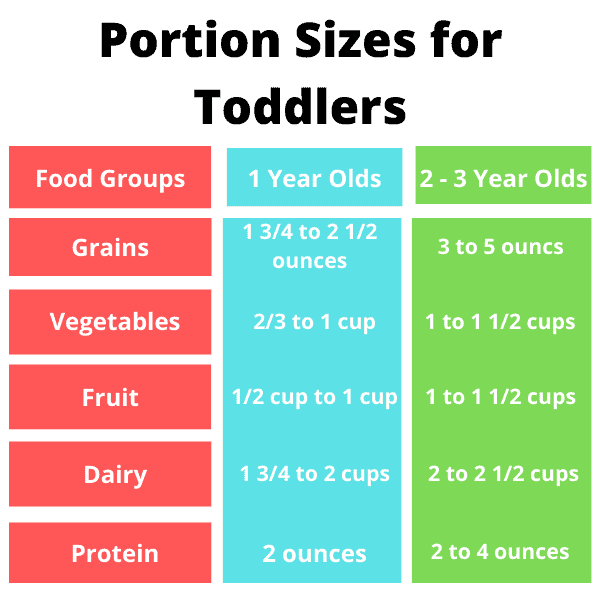
Variety is Key
When preparing a toddler meal or snack, offer portions of a few different food groups, rather than several portions of one food group.
For example, if you provide dried fruit for a snack, you want to add a protein to balance the fruit and carbohydrates out.
Here’s an example of a toddler meal plan:
- Breakfast: 1 scrambled egg, 1 oz oatmeal, 6 oz low-fat milk
- Snack: 4 oz plain low-fat yogurt and 1 small banana (less than 6 inches)
- Lunch: ½ oz sliced turkey and 1 oz low-fat cheese rolled in 1oz tortilla, ½ cup cucumber slices
- Snack: ¼ cup dried fruit and 1 oz low-fat cheese
- Dinner: ½ oz chicken, ½ oz baked sweet potato fries, ½ cup broccoli florets, 4 oz low-fat milk
Feeding Tips for Tots
Feeding toddlers is not about portion control so don’t worry about weighing and measuring exact amounts.
Here are some tips:
- Pre-portion servings into snack bags so they’re ready to go.
- Start with a little bit of food, or a toddler portion size, and give seconds if they want more.
- Use single serving packages such as fruit cups, cheese cubes, dried fruit, apple slices, yogurt and crackers.
- Make water the primary beverage so they’re hungry for healthy meals and snacks.
- Don’t force kids to finish their food. Remember Ellyn Satter’s “rule of thumb”: you are in charge of what and when your child eats and the child is in charge of how much they eat.
Portion sizes for toddlers are a starting point, not a restriction or a minimum amount your child must eat.
Every child is different and appetites vary from day-to-day. As long as your toddler continues to show age-appropriate weight gain and growth charts are showing consistent growth, your toddler is likely eating enough for their age.
Let your toddler explore flavors and textures but limit empty calorie foods with added sugar, sodium and saturated fat so your toddler doesn’t crowd out important nutrients.
Remember, taste preferences established now affect food choices when your toddler is older.
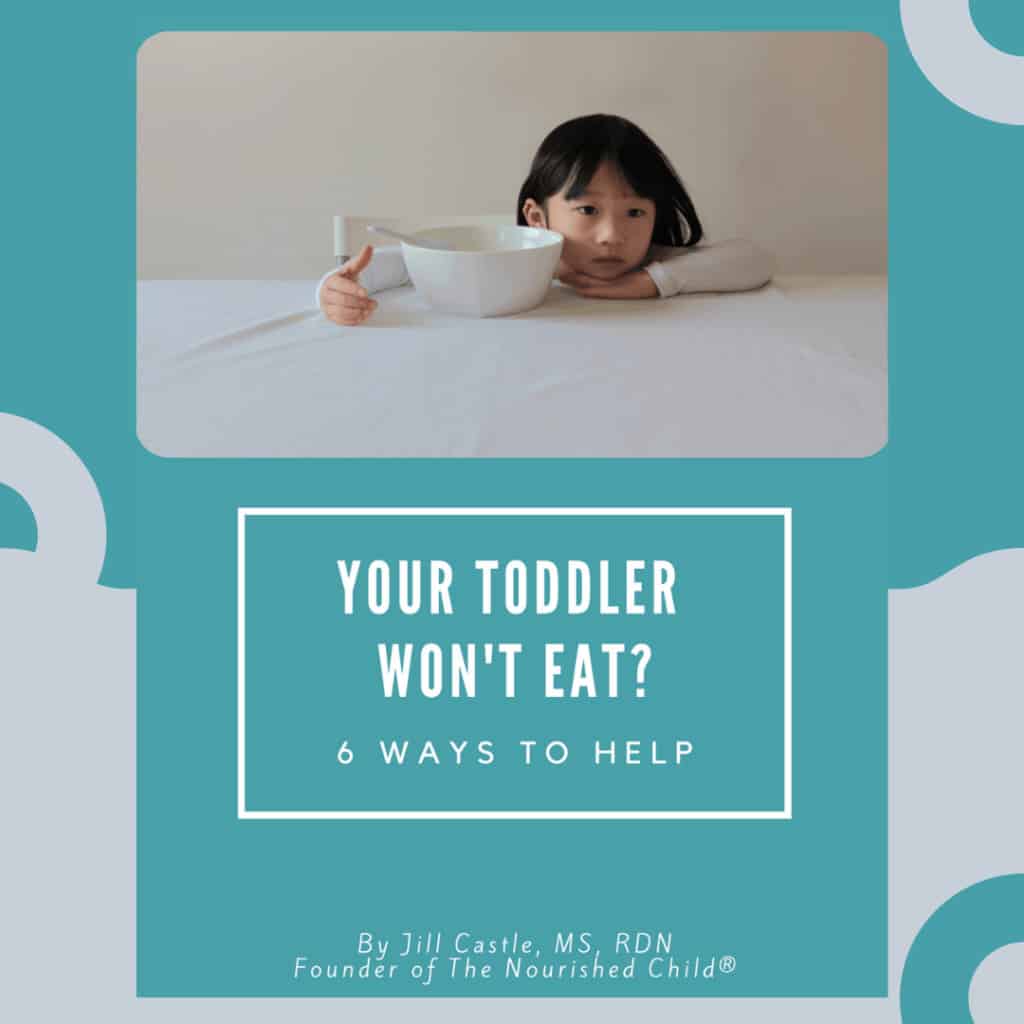
Get your guide to help your toddler eat:
Need More Nutrition Help for Your Toddler?
Check out our resources, including our on demand trainings, nutrition booklets, and our podcast.
Also, if you need portions for kids or babies, these articles will help:
How Much Should I Feed My Baby?
A Guide to Portion Sizes for Children
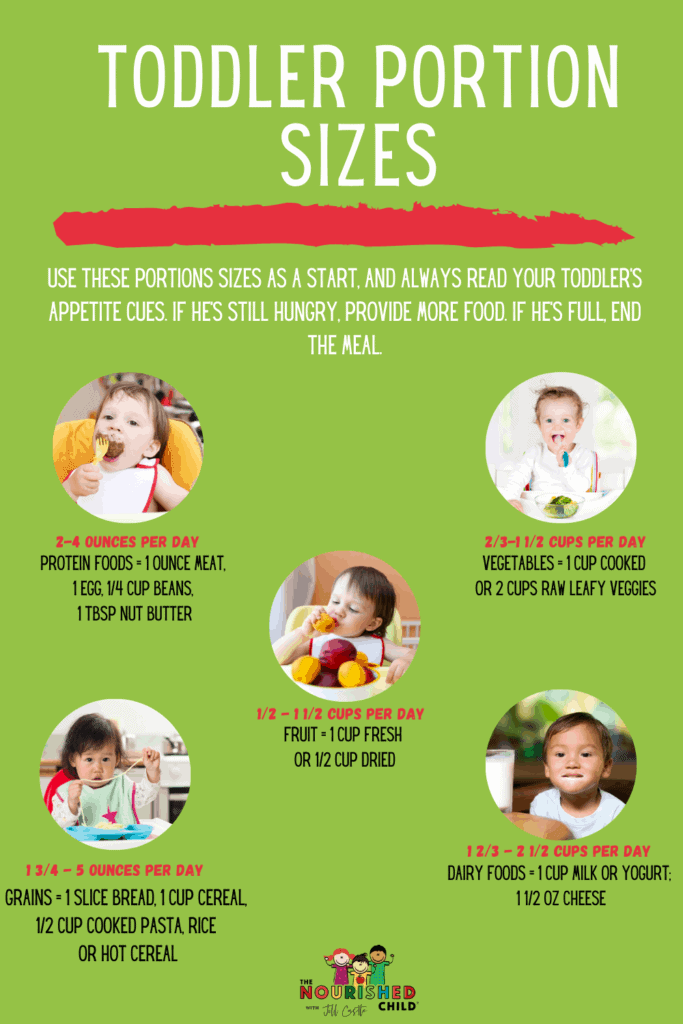
References
Dietary Guidelines for Americans. 2020-2025
What’s on your plate? MyPlate.

